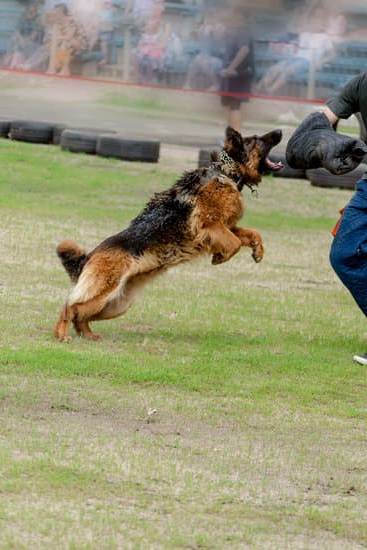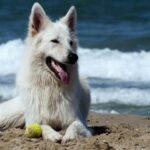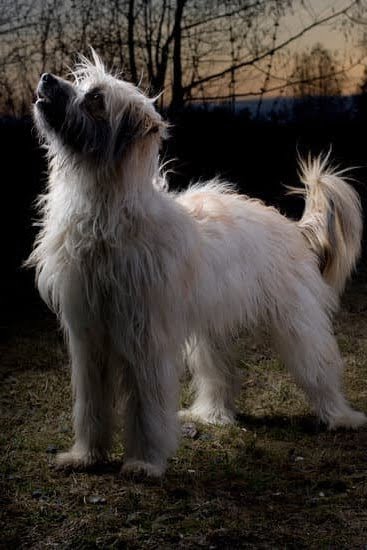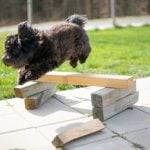Sled dog racing, a thrilling and challenging sport, captures the essence of teamwork between humans and canines in harsh winter landscapes. One may wonder, how do they train sled dogs to perform such athletic feats? This article delves into the intricate world of sled dog training, from its historical origins to the modern practices employed by mushers today.
The tradition of using sled dogs for transportation dates back centuries, where indigenous peoples relied on these loyal companions in regions with snowy terrain. Over time, the practice evolved into a competitive sport known as sled dog racing, captivating enthusiasts worldwide. Various breeds excel in this demanding discipline, each showcasing unique traits that make them formidable competitors on the icy trails.
Training a successful sled dog encompasses more than just physical prowess; it involves fostering traits like obedience, trust, and teamwork. Through structured obedience training programs and positive reinforcement techniques, mushers build strong foundations with their canine athletes. As the bond between human and dog strengthens, they work together seamlessly to conquer the challenges of long-distance sled races.
History and Origins of Sled Dog Training
The history and origins of sled dog training can be traced back to the indigenous peoples of the Arctic regions who relied on these remarkable animals for transportation, hunting, and survival in harsh winter conditions. Sled dogs have been an integral part of human societies in the Arctic for thousands of years, with breeds like Siberian Huskies, Alaskan Malamutes, and Samoyeds being specifically bred for their strength, endurance, and ability to work in cold climates.
Traditional Methods of Sled Dog Training
In the past, sled dog training methods were passed down through generations within specific communities. Dogs were trained from a young age to pull sleds, follow commands from their mushers, and navigate through snow-covered terrain. Traditional techniques often involved using positive reinforcement, building a strong bond between musher and dog, and emphasizing the importance of teamwork.
Evolution of Sled Dog Training Techniques
As sled dog racing gained popularity as a sport in the late 19th and early 20th centuries, training methods evolved to incorporate modern techniques derived from animal behavior studies and psychology. Today, professional mushers use a combination of traditional practices and scientific principles to train their sled dog teams effectively. From obedience training to conditioning regimens, modern sled dog training focuses on maximizing performance while ensuring the well-being of the dogs.
Breeds of Dogs Commonly Used in Sled Dog Racing
Alaskan Malamute
The Alaskan Malamute is one of the oldest sled dog breeds, known for their strength and endurance. These dogs are large, powerful, and have a thick double coat that protects them from harsh winter conditions. They are often used in long-distance sled dog races due to their ability to pull heavy loads over long distances without tiring easily. Alaskan Malamutes have a friendly and loyal temperament, making them great team members in a sled dog racing pack.
Siberian Husky
Siberian Huskies are perhaps the most well-known breed used in sled dog racing. With their iconic wolf-like appearance, these medium-sized dogs are built for speed and stamina. They have a strong desire to run and pull, making them excellent sled dogs for shorter sprint races. Siberian Huskies are also known for their friendly and outgoing nature, which helps build strong bonds with their mushers and fellow sled dogs.
Samoyed
While not as commonly used in competitive sled dog racing as Alaskan Malamutes or Siberian Huskies, Samoyeds are still utilized by some mushers who appreciate their gentle and sociable demeanor. Samoyeds have a thick white coat that provides insulation against cold temperatures, making them well-suited for shorter distance races in snowy climates. Their friendly disposition makes them easy to work with during training sessions and helps create a positive team dynamic within a sled dog pack.
In order to prepare these various breeds of dogs for the demands of competitive sled dog racing, mushers must focus on proper training techniques that build obedience, strength, endurance, and teamwork among the dogs. So, how do they train sled dogs to excel in this challenging sport? Let’s delve into the specific methods used by experienced mushers to shape their canine athletes into top-performing sled dogs.
Physical and Mental Attributes Required in a Sled Dog
Sled dogs are unique breeds that possess a distinct set of physical and mental attributes that make them well-suited for the demanding sport of sled dog racing. One of the most important qualities in a sled dog is their endurance and stamina, as they must be able to cover long distances over challenging terrain.
These dogs also need to have a thick double coat to protect them from harsh winter conditions, as well as strong, muscular builds to pull heavy sleds loaded with supplies or passengers.
In addition to physical attributes, sled dogs must also have the right temperament and mental fortitude for the rigors of racing. They need to be highly intelligent and responsive to commands given by their musher, as teamwork and communication between dog and human are crucial in navigating the trails effectively. Sled dogs should also exhibit a strong work ethic, resilience, and adaptability in order to handle the unpredictable nature of long-distance races.
So, how do they train sled dogs to develop these essential physical and mental attributes? Training begins at a young age, with puppies introduced to basic commands and socialization practices. Obedience training is key in setting boundaries and establishing the hierarchy within the team.
Consistent training routines help build trust between musher and dogs, laying the foundation for successful teamwork on the trails. Through positive reinforcement techniques such as treats or praise, sled dogs learn to associate good behavior with rewards, reinforcing desired behaviors during training sessions.
How Do They Train Sled Dogs
Sled dog racing is a competitive sport that requires not only skilled mushers but also well-trained sled dogs. Obedience training is a crucial aspect of preparing sled dogs for races. Training these dogs to follow commands promptly and accurately can make a significant difference in their performance on the trail. The bond between musher and dog is built upon mutual trust, respect, and clear communication, making obedience training an essential foundation for successful teamwork in sled dog racing.
One of the primary goals of obedience training for sled dogs is to ensure that they respond reliably to commands given by the musher during a race. Commands such as “gee” (turn right), “haw” (turn left), “whoa” (stop), and “on by” (ignore distractions) are some of the fundamentals that sled dogs must understand and execute promptly. Consistent repetition of these commands during training sessions helps reinforce the desired behaviors in sled dogs, enabling them to perform effectively during races.
Training sled dogs for obedience also involves teaching them basic manners, such as walking politely on a leash, sitting on command, and coming when called. These skills not only contribute to the overall discipline of the sled dog team but also help prevent potential behavioral issues or safety concerns during races.
Positive reinforcement techniques, such as using treats, praise, or playtime as rewards for obeying commands correctly, are commonly employed in sled dog training to motivate and encourage desired behaviors effectively.
| Aspect | Importance |
|---|---|
| Reliable response to commands | Essential for performance on the trail |
| Basic manners training | Contributes to discipline and safety |
| Positive reinforcement techniques | Motivates desired behaviors effectively |
Conditioning and Fitness Regimen for Sled Dogs
Sled dog racing is a demanding sport that requires not only skillful mushers but also well-trained and physically fit sled dogs. To ensure that the team performs at its best, an essential aspect of sled dog training is conditioning and fitness regimen. Sled dogs need to develop endurance, strength, and stamina to endure long distances in harsh conditions. Here are some key elements of how they train sled dogs to achieve peak physical fitness:
- Endurance Training: To prepare sled dogs for the grueling races, mushers gradually increase the distance and duration of their runs. This gradual buildup allows the dogs to develop endurance over time and prevent injuries caused by overexertion.
- Strength Training: Sled dogs also need to build muscle strength to pull heavy loads across snow and ice. Mushers incorporate weight pulling exercises or resistance training to help strengthen the muscles needed for pulling a sled.
- Aerobic Exercise: Mushers often use activities like hiking, biking, or swimming as cross-training exercises to improve cardiovascular fitness in sled dogs. These activities help improve overall endurance and stamina, crucial for long-distance races.
In addition to physical conditioning, mental preparedness is also vital for sled dogs participating in races. The mental attributes required include focus, determination, and a strong work ethic. Sled dog training includes mental stimulation exercises such as problem-solving tasks or obstacle courses to keep the dogs engaged and sharp. By incorporating both physical and mental conditioning into their training regimen, mushers ensure that their teams are well-prepared for the challenges of sled dog racing.
Proper nutrition, hydration, rest periods, and regular veterinary care are also essential components of a sled dog’s fitness regimen. A balanced diet rich in protein and nutrients helps maintain energy levels and muscle mass in sled dogs. Adequate rest periods allow the dogs to recover from strenuous training sessions and prevent burnout or injuries. Regular veterinary check-ups ensure that the dogs are in optimal health condition for racing season.
Building Trust and Teamwork Between Musher and Sled Dogs
Sled dog racing is a unique and demanding sport that requires a strong bond between the musher (the person driving the sled) and the sled dogs. Building trust and teamwork between them is crucial for success in competitions. This partnership goes beyond just physical ability; it is about understanding your team, knowing their strengths and weaknesses, and communicating effectively with them.
So, how do they train sled dogs to develop this trust and teamwork? One key aspect is spending quality time with the dogs outside of training sessions. This can include grooming, playing, or simply being around them to establish a connection. It’s important for the musher to be familiar with each dog’s personality and preferences, which allows for better communication and ultimately strengthens their bond.
Another important element in building trust is consistency in training methods. Sled dogs respond well to routines and clear expectations. By sticking to a consistent training regimen, including regular workouts, feeding schedules, and rest periods, sled dogs learn to trust their musher and feel more confident in their role within the team. Positive reinforcement also plays a significant role in building trust; rewarding good behavior with treats or praise reinforces the desired responses from the dogs.
| Training Method | Details |
|---|---|
| Consistency | Sticking to a routine helps sled dogs feel secure |
| Positive Reinforcement | Rewarding good behavior strengthens trust and teamwork |
| Quality Time | Spending time outside of training sessions helps build connections |
Techniques for Teaching Sled Dogs Commands and Cues
Training sled dogs requires a combination of patience, skill, and understanding of the unique ways in which these remarkable animals learn. Using various techniques for teaching commands and cues is essential to ensure that sled dogs respond effectively to their mushers during races. Here are some key methods used in training sled dogs:
- Voice Commands: One of the most common ways to communicate with sled dogs is through voice commands. Trainers use simple, consistent phrases to indicate different actions such as “haw” for left turns and “gee” for right turns. By repeating these commands consistently during training sessions, sled dogs learn to associate specific words with desired behaviors.
- Hand Signals: In addition to verbal cues, hand signals can be used to guide sled dogs on the trail. Mushing requires mushers to keep both hands on the sled at all times, so visual signals can be effective in communicating with the team. For example, raising a hand flat could signal a stop while pointing forward could mean straight ahead.
- Lead Dogs: Lead dogs play a crucial role in sled dog teams as they set the pace and follow commands from the musher. Often, lead dogs are trained separately using more advanced techniques such as target training or clicker training. These methods help reinforce specific behaviors and improve communication between the lead dog and musher.
Utilizing a combination of voice commands, hand signals, and specialized lead dog training techniques allows mushers to effectively communicate with their sled dog teams during races. This clear communication helps ensure that everyone is working together towards a common goal of reaching the finish line swiftly and safely.
- By incorporating positive reinforcement methods such as rewards like treats or praise when a sled dog correctly follows a command,
- mushers can create an environment where learning is enjoyable for the dogs.
- This positive association motivates sled dogs to obey commands promptly and enhances their performance on the trail.
The Role of Positive Reinforcement in Sled Dog Training
Positive reinforcement plays a crucial role in sled dog training, as it helps to establish a strong bond between the musher and the dogs while encouraging desired behaviors. By rewarding sled dogs for following commands or exhibiting the right behavior, such as listening to cues and working well as a team, trainers can reinforce these actions and increase the likelihood of them being repeated in the future.
This form of training is based on the principles of operant conditioning, where rewards such as treats, praise, or toys are used to motivate and reinforce good behavior.
In sled dog training, positive reinforcement not only helps in teaching commands but also aids in building confidence and trust within the team. Dogs respond well to rewards and praise, which boosts their morale and enhances their performance during training sessions and races. When sled dogs associate following commands with positive outcomes like treats or affection from their musher, they are more likely to comply willingly and eagerly.
Training sled dogs using positive reinforcement also fosters a strong relationship between the musher and the team of dogs. Through consistent rewards for good behavior, mutual respect and trust are built between humans and canines.
This bond is essential for successful communication during races, as well as ensuring that the dogs enjoy their work and perform at their best ability. Positive reinforcement ultimately creates a harmonious partnership where both musher and sled dogs work together towards a common goal of success in sled dog racing.
Preparing Sled Dogs for Racing Season
Competing in sled dog races requires a significant amount of preparation, not just for the musher but also for the sled dogs. As the racing season approaches, it is crucial to focus on the well-being and conditioning of these incredible athletes.
One of the key aspects of preparing sled dogs for racing season is ensuring they are on a proper diet. A nutritious and balanced diet is essential to keep them strong, healthy, and energized for the physical demands of racing.
In addition to a suitable diet, veterinary care plays a vital role in keeping sled dogs in prime condition. Regular check-ups, vaccinations, and preventive treatments are necessary to ensure that the dogs are healthy and fit to compete. Any underlying health issues must be addressed promptly to prevent any complications during the racing season. Moreover, adequate rest periods are crucial for allowing the dogs’ bodies to recover and recharge between training sessions and races.
Furthermore, building trust and teamwork between the musher and sled dogs is essential for a successful racing season. Effective communication through commands and cues helps establish a strong bond between them. Positive reinforcement techniques are commonly used during training to encourage desired behaviors from the dogs.
By creating a positive and supportive environment, sled dogs can reach their full potential and perform at their best during competitions. Overall, with proper training, care, and attention to their well-being, sled dogs can thrive in the demanding sport of sled dog racing.
Frequently Asked Questions
How Do Sled Dogs Learn to Pull the Sled?
Sled dogs learn to pull the sled through training and practice. They start with basic commands like “gee” (turn right) and “haw” (turn left). Over time, they develop strength, endurance, and teamwork skills necessary to pull heavy loads across snowy terrain.
Are Sled Dogs Treated Humanely?
Sled dogs are typically treated humanely by mushers who prioritize their well-being. These dogs receive proper nutrition, veterinary care, exercise, and rest. Mushers form strong bonds with their canine team members, fostering a relationship based on trust and respect.
How Can a Dog Become a Sled Dog?
A dog can become a sled dog through training and exposure to the sport from a young age. Breeds like Siberian Huskies, Alaskan Malamutes, and Samoyeds are commonly used due to their endurance and cold-weather tolerance. Introducing a dog to pulling gradually and positively reinforces good behavior helps in developing into a successful sled dog.

Welcome to the blog! I am a professional dog trainer and have been working with dogs for many years. In this blog, I will be discussing various topics related to dog training, including tips, tricks, and advice. I hope you find this information helpful and informative. Thanks for reading!





